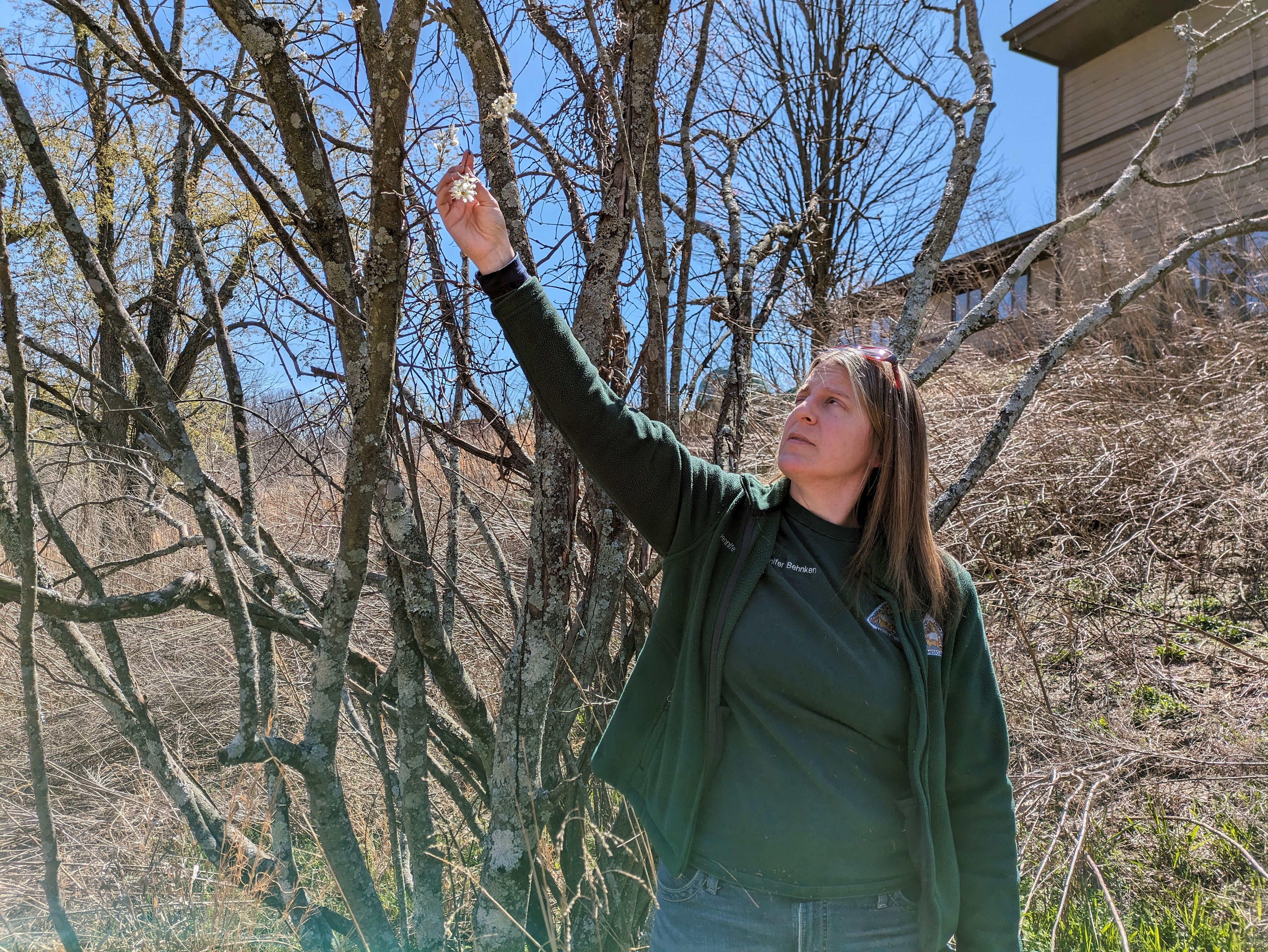Missouri Department of Conservation aims to end the ecological disaster taking shape across the state
The beautiful white flowers have fallen from the Callery pear trees, also known as the pyrus calleryana. With the beauty now gone, all that remains is an ecological disaster and a huge conservation effort to remove the trees from Missouri’s landscape.
The beautiful white flowers have fallen from the Callery pear trees, also known as the pyrus calleryana. With the beauty now gone, all that remains is an ecological disaster and a huge conservation effort to remove the trees from Missouri’s landscape.
The Callery pear, also known as the Bradford pear, is an invasive species that has spread across most of the Eastern United States, including Missouri.
The rapid and uncontrolled spread of the Callery pear has led several states to introduce initiatives aimed at eliminating the invasive tree.
Missouri House Bill 2412 was introduced in February 2024 and aims to ban the sale of several invasive plants, including the Callery pear.
The Missouri Department of Conservation (MDC) is currently offering to replace the invasive trees with registration set to end on Apr. 15.
MDC community forrester and Cape Girardeau Tree Board chairman, Jennifer Behnken, is leading the effort in the Cape Girardeau area.
“We’ve partnered with the Missouri Invasive Plant Council for the Callery pear buyback program,” Behnken said. “We’re asking people to participate in removing their own pear tree from their yard. If they can do that, and they submit the photo… then they get a free three-gallon tree in return.”

The replacements are various species of flowering trees that look similar to the bradford pear, but are native and environmentally friendly, Behnken said.
The invasive nature of the Callery pear isn’t the only downfall of the species.
Callery pears are a soft wood, leading to limbs routinely breaking during Missouri’s freezing winters and stormy springs.
The spring blooms also produce a rotting fish-like odor that is alluring to pollinators but revolting to many people, Behnken said.
Regardless of the issues, the tree is a common sight in landscaping, where it has been praised for its early bloom and rapid growth.
According to Behnken, Callery pears were initially thought to be sterile and, therefore, unable to spread into wilderness areas. This made them especially popular in landscaping since the 1960s.
Behnken said the introduction of multiple varieties, or cultivars, of the invasive tree increased its genetic diversity and allowed for the plant to become fertile.
This has created a situation where ornamental trees can spread across Missouri’s wilderness.
“You have a pretty, plated row of them in someone’s yard, and then you look across the field and there are thousands of them in big thickets,” Behnken said. “That’s why it’s becoming such a big issue.”
One such field of invasive trees is tucked away on SEMO’s campus.
Hundreds of Callery pears have taken root in an undeveloped field between the ShowMe Center and the Charles Hudson Greenhouse.
Agriculture professor and Cape Girardeau Tree Board vice-chairman Sven Svenson teaches at the greenhouse and advocates for the removal of Callery pears.
The field, which was once a parking lot, used to be maintained. Svenson said due to manpower constraints, mowing the area became a low priority. This created perfect conditions for the invader.
“Its seeds are very aggressive, and the tree is adaptable to any kind of condition, so wherever the seed gets dropped, in a year or two, there’s a plant,” Svenson said.
The seeds are spread by birds, which aid in the proliferation of the plant.
Although the trees provide a food source to various bird species, they are among the only native wildlife that can take advantage of the tree.
“If this non-native species is there and it makes more and more of itself, then the only thing that can survive, in terms of wildlife, are things that eat that plant. Everything else that needed a different plant is gone,” Svensen said. “It only supports three or four things, when it should be supporting 60, 80, 120 things.”
When native animals are confined to fewer available native plants, the damage to the environment is accelerated. Fewer native trees reach adulthood while the invasive species continues to expand without threats from predators.
The result is a monoculture, where one species dominates an environment. This is the disaster the MDC wants to prevent, Behnken said.
According to Svenson, the buyback program is effective for removing the tree as a landscape feature but less useful in a widely infested area.
While the MDC can reimburse up to 90% of the costs associated with the removal of the hundreds of Callery pear trees on SEMO’s campus, they do not provide the labor, Behnken said.
Redistributing labor from current projects is the largest barrier to removing the trees from SEMO’s campus. Not only would a large workforce be needed to cut and treat the stems initially, but the process would have to be repeated for several years until all of the seeds that have taken root are destroyed, Svenson said.
“Those seeds may stay dormant for 10 to 20 years. So you’ve got a generation of people that have to keep an eye on that space to keep the exotics out,” Svenson said. “Who’s going to pay for that? Who’s going to volunteer to do that for 20 years?”
Svenson advocated for new technologies that could make the process easier and less labor intensive.
One such technology is the use of drones to find and eliminate saplings before they become large enough to require human intervention.
Solitude Lake Management is a Missouri company that specifically designs drones for the elimination of invasive plants.






